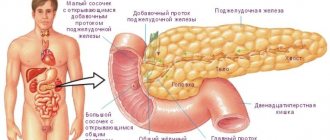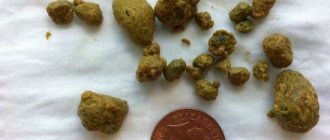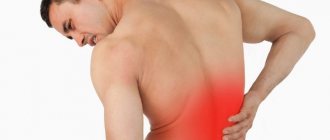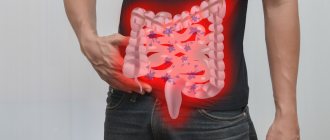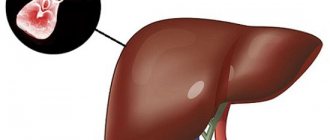Major liver diseases
Liver diseases are represented by various types of damage to structures that do not go beyond the anatomical limits of the organ in question. Liver diseases are talked about even when the bile ducts, hepatocytes, liver lobules, intrahepatic arterial and venous vessels are affected.
Among the primary inflammatory, functional, purulent lesions of liver cells, the following are distinguished:
- fatty hepatosis;
- toxic hepatitis;
- viral hepatitis;
- alcoholic, non-alcoholic steatohepatosis;
- hepatomegaly of unspecified origin;
- liver abscess;
- syphilitic, tuberculous liver damage.
Vascular diseases include:
- pylephlebitis;
- hepatic vein thrombosis;
- arteriovenous fistulas, fistulas (intrahepatic);
- portal hypertension.
The following traumatic injuries are distinguished:
- firearms;
- open (stab wounds);
- organ crushing;
- organ rupture due to blunt closed abdominal injuries.
The following diseases of the intrahepatic ducts have been identified:
- Caroli's disease;
- intrahepatic cholestasis;
- chronic cholangitis;
- acute cholangitis;
- cholelithiasis (intrahepatic).
Let's consider parasitic infestations and infections:
Let us describe tumor diseases:
- intraductal cancer;
- hemangioma;
- liver cyst;
- angiosarcoma, different types of sarcoma;
- metastatic damage to an organ due to cancer that is localized in nearby organs;
- hepatocellular carcinoma.
Liver lesions that are observed in pathologies of other organs are as follows:
- amyloidosis;
- congestive liver;
- renal and hepatic failure.
There are different types of hereditary pathologies and anomalies:
- hemochromatosis;
- hypoplasia, organ aplasia;
- fermentopathy + copper metabolism disorder;
- pigmentary hepatosis;
- atresia of intrahepatic vessels, ducts;
- fermentopathy + disorder of bilirubin metabolism.
Let's note autoimmune liver diseases:
- hepatitis (autoimmune);
- biliary cirrhosis of the liver (primary);
- sclerosing cholangitis (primary).
Structural and functional rearrangements of the organ and their complications are considered very dangerous:
Special manifestations of symptoms of the disease in men
Signs of liver disease in men have their own characteristics. Thus, in representatives of the stronger sex, changes in the synthesis of hormones are more pronounced. This is especially true for alcoholic liver disease in men. In men who suffer from alcoholic and viral cirrhosis, feminization occurs in 80% and 15%, respectively.
Alcohol is an activator of the transformation of male hormones (testosterone, androgen) into female hormones (estrogens). For this reason, the following changes occur in the body of men:
- impotence;
- gynecomastia (breast enlargement in men);
- the testicles atrophy;
- there is a change in the type of hair growth;
- libido disappears.
With the development of certain liver diseases, there is an increase in parathyroid hormone and its derivatives, which affect bone structures:
- spontaneous fractures;
- bone pain;
- bone deformities. They are most often seen on flat bones.
Pathologies in men
Every liver disease poses a threat to human health. In total, there are many pathologies associated with the gland, and some of them can be asymptomatic.
It is important to familiarize yourself with the most common and dangerous diseases, study their symptoms and treatment.
This measure will make it possible to distinguish the pathological processes of the organ from other diseases associated with the reproductive system in the male body.
Many signs of liver disease in men can occur simultaneously. Some of them indicate the presence of several pathological processes at once, so you should not focus only on the clinical picture.
Be sure to rush to see a doctor, who will order the appropriate tests, carry out all the necessary diagnostic measures, and establish an accurate diagnosis.
Cirrhosis of the liver
This pathology is chronic and progressive. As a result of the destructive activity of the disease, a restructuring of the structures of liver tissue and blood vessels occurs.
Decreased functioning occurs due to destructive activity at the cellular level. As a result, connective tissue grows, leading to liver failure.
The causes of this disease can be alcohol addiction, various forms of hepatitis, helminthic infestations, and infectious lesions.
The disease manifests itself as jaundice, varicose veins in the epigastrium, intoxication of the body and hormonal imbalances.
Steatosis
The disease develops due to the accumulation of fat in the liver cells. The causes of this disease can be many factors, including poor nutrition and a sedentary lifestyle.
Both factors lead first to obesity, diabetes, protein deficiency and other diseases of the digestive system, then to the pathology itself.
Steatosis is characterized by an increase in liver size. There is a separate type of disease caused by alcohol addiction.
In the absence of correct and timely treatment, the development of cirrhosis, bleeding and oncology is possible.
Oncology
The appearance of malignant neoplasms that rapidly develop and reach large sizes in the liver is the result of many untreated pathological processes.
They are joined by unhealthy diet and poor lifestyle. The presence of a tumor in the gland requires immediate treatment, since the disease develops rapidly, damaging the organ, leading to death.
Cirrhosis, hepatitis, parasites and alcoholism can lead to cancer. The patient begins to experience a number of unpleasant symptoms, including sudden weight loss, chronic fatigue, apathy, sleep disturbances, gastrointestinal disorders, pain, and signs of intoxication of the whole body.
Hepatitis
Infection with the hepatitis virus leads to the disease itself. During the incubation period, many patients may not be aware of the presence of pathology in the body.
Each form of hepatitis manifests itself differently, going through an acute phase. With effective and timely treatment, the patient recovers; if the disease is not treated, it becomes chronic.
All forms of hepatitis lead to liver cancer or cirrhosis. Sometimes there is death. Therefore, it is extremely important to consult a doctor for timely medical help at the first signs of illness.
Patients may feel weakness, apathy, decreased performance, and increased fatigue.
The patient loses his appetite, pain appears in the right hypochondrium. These signs are accompanied by nausea, vomiting, darkening of urine, and discoloration of stool.
The affected organ increases in size.
Hemangioma
The disease is presented in the form of a benign neoplasm consisting of vascular tissue.
The pathology is congenital and may be asymptomatic. As tumor formation increases, pressure may be exerted on neighboring organs.
Therefore, patients may experience unpleasant symptoms associated with discomfort, pain syndromes in the right hypochondrium, nausea, vomiting, and a significant increase in liver size.
If an accidental injury occurs in the abdominal area, a tumor that is too large can be touched and damaged.
This threatens to cause bleeding and lead to death. The disease must be detected at the initial stages to avoid dangerous consequences.
Cysts
The pathology is presented in the form of benign formations in the liver, which is filled with fluid.
The area of localization of the cyst is different; formations can be located on the surface, in the cavity or in the ligaments.
When diagnosing, a cyst stalk is sometimes observed. The formation is associated with inflammatory processes in the bile ducts, due to hormonal disorders.
When small in size, cysts do not have pronounced symptoms. As the size of the formations increases, disturbances in the digestive system are observed, manifested by nausea, vomiting, stool disturbances, and discomfort in the epigastrium.
The patient loses his appetite, feels constant weakness and malaise. Shortness of breath, increased sweating, and enlargement of the organ are often observed.
Hemochromatosis
The disease is characterized by excessive accumulation of iron in the body, disrupting liver function.
This process occurs due to excess absorption of iron by the digestive system.
As a result, the function of the reproductive system is disrupted, joint pain appears, the patient experiences weakness, and the color of the skin changes.
Diabetes mellitus, liver cirrhosis, heart failure, and cancer develop.
The disease is accompanied by pain in the joints, weakness, increased fatigue, and tiredness.
The liver increases in size, the skin darkens, and infections develop.
Primary amyloidosis
Various disorders associated with protein metabolism, in which the glycoprotein amyloid is deposited in tissues, are called amyloidosis.
This disease develops due to infectious processes in the body. As a result, the patient feels pain, the liver increases in size, and an increased level of protein is noted in the urine test.
Jaundice is rarely observed. Sometimes hemorrhagic syndrome develops. At the first unpleasant signs in the body, you should immediately consult a doctor.
Many symptoms of various diseases are very similar to each other; only a specialist can determine the pathology.
Sometimes a dangerous pathological process can be asymptomatic. Therefore, it is important to visit the doctor promptly and regularly for routine examinations.
Making a diagnosis on your own based on the clinical picture or prescribing treatment is contraindicated. These measures can not only be erroneous and ineffective, but also dangerous.
Main symptoms
Liver damage is usually accompanied by the following symptoms:
- yellowing of the dermis;
- sweat acquires a very unpleasant, pungent odor;
- nausea;
- diarrhea;
- acquisition of a dark yellow color in urine;
- heartburn;
- acquisition of dark brown, light brown, green color by feces.
Acne may occur with liver disorders. Severe hunger, thirst, itching in areas with thin dermis, and blurred vision may also occur. There may be a sharp change from heat to cold and vice versa, deterioration of sleep, increased heart rate. In some cases, hair loss, eyebrow loss, the appearance of seizures, atherosclerosis of the brain, intestines, heart, blood vessels of the legs, and papillomas are observed.
The difficulty of diagnosing liver pathology depends on the specific type of disease. The individuality of the body and the presence/absence of concomitant pathology also play a huge role. Symptoms of the disease manifest themselves differently in different patients.
Liver pathology usually manifests itself as follows:
- increase in organ size;
- discomfort, pain in the area where this organ is located;
- headache;
- general weakness;
- increase in abdominal size;
- yellowness of the dermis, sclera;
- disturbance of mental and mental work;
- hypovitaminosis;
- excessive sweating, swelling;
- stool instability;
- rash on the dermis;
- itching of the dermis;
- bitterness in the mouth;
- weight loss;
- fragility of blood vessels, bleeding;
- coated tongue (white, brown);
- temperature;
- manifestation of an enhanced venous pattern on the abdomen;
- cracks in the tongue.
Features of the manifestation of pain in pathology
Pain in various pathologies of the organ we are considering is of a unique nature. They can be like this:
- Intense. This type of pain manifests itself in the area of the right hypochondrium. They appear in rare cases. Their occurrence indicates a purulent, inflammatory, traumatic process, injury to the bile ducts by stones.
- Minor pain. They usually appear in the area of the right hypochondrium, similar to aching pain, a feeling of heaviness, and fullness. Their appearance indicates the presence of a sluggish pathological process that has a toxic or other origin. Pain usually provokes an increase in the size of the organ and overstretching of the liver capsule.
- Severe pain, which has a local point character in the projection of the liver. It usually indicates pathology of the extrarenal bile ducts and gallbladder.
- Absence of any kind of pain. It is characteristic of indolent diseases of this organ, which can be detected only with the development of cirrhosis and liver failure.
In addition to changes in the shade of the dermis, most people with liver pathologies experience various rashes. Let's consider the features of the mechanism of occurrence and types of rash:
- Allergic rash. It is like spots, papules. The occurrence of this symptom is due to disruptions in the detoxification function of the organ in question. These failures underlie allergies resulting from environmental exposure.
- Furunculosis, folliculitis, pustular elements. They arise as a result of an imbalance that occurs when the liver’s ability to synthesize immunoglobulins decreases.
- Hemorrhagic rash. Small hemorrhages (petechial rashes) occur over the entire surface of the dermis. The reason for their occurrence is a decrease in the synthetic function of the organ. Violation of this function affects the proteins that are included in the blood coagulation system. For this reason, patients with this disorder have a high tendency to develop hematomas, even with minor injuries.
If you notice some of the listed symptoms, it is recommended to visit a specialist. He will determine the cause that provoked the manifestation of such symptoms.
All organs are important in their own way, but there are also those without which a person simply cannot exist. The liver is one of the main “elements” of the body; it performs many useful functions. Given the heavy loads, this organ often suffers from inflammatory processes of varying severity. Symptoms of liver disease depend on the specific type of illness and its stage. Today, cirrhosis, hepatitis, toxic lesions, and stone formation are often diagnosed. The signs of such diseases differ. If the liver hurts, what symptoms does a person have?
The first signs of a diseased liver
Signs of a diseased liver in women and men have some distinctive features. In general, the disease progresses similarly in both sexes. Symptoms are divided into internal and external manifestations of liver inflammation. Internal signs:
- sharp pain on the right side under the ribs;
- digestive problems;
- abdominal enlargement;
- nausea;
- hair loss;
- darkening of urine;
- the appearance of a feeling of heaviness in the right hypochondrium, which is preceded by the absorption of fried, spicy foods high in calories.
External symptoms of a diseased liver, which can be seen in the photo, appear on the skin:
- jaundice: the mucous membranes and skin acquire an unhealthy yellowish tint, which is visible to the naked eye;
- rashes, itching;
- psoriasis, eczema: spots with a rough surface that occur mainly on the head and upper torso.
Nature of liver pain
Painful sensations in the liver area can be of a different nature, depending on the severity of the disease and the degree of damage to the organ:
- aching, mild pain is characteristic of a slowly developing pathological process associated with an increase in the size of the liver;
- acute sharp, most likely indicates an injury or incorrect physical activity;
- paroxysmal pain indicates an exacerbation of the inflammatory process;
- severe chronic pain characterizes the presence of a serious gland disease.
Painful sensations can be observed not only in the right hypochondrium, but also radiate (give) under the right shoulder blade.
Liver diseases and their symptoms
Liver ailments are a large list of diseases that differ in their causes and symptoms. This article will discuss lesions of an important organ, which are more common than other ailments. Let's talk about the symptoms of liver disease due to hepatitis, cirrhosis, toxic ailments, and the formation of stones. If signs appear that indicate liver problems, you should consult your doctor immediately.
Liver cirrhosis in men and women
Liver cirrhosis refers to extensive lesions due to which healthy tissues atrophy, gradually turning into scar tissue. Due to this replacement, nodes of different sizes are formed, which significantly modify the structure of the “filtering” organ. Men get sick much more often than the fair sex. What are the symptoms of liver cirrhosis? This question interests many. These include:
- the first signs of liver cirrhosis are yellowing of the skin, mucous membranes, as well as rapid weight loss accompanied by decreased appetite;
- severe weakness, increased fatigue, drowsiness;
- the appearance of “stars” from blood vessels on the skin that turn pale when pressed;
- skin itching, worse at night;
- dark yellow color of urine;
- frequent formation of bruises on the skin;
- How does the liver hurt with cirrhosis: sharp, severe pain is felt under the ribs on the right side of the body;
- symptoms of liver disease in women are supplemented by dysfunction of the menstrual cycle, in men – by impotence.
Toxic damage
A complex of diseases associated with the damaging effects of various factors is toxic liver damage. Substances that cause poisoning can be medications, household chemicals, foods (for example, mushrooms), radiation, and so on. Due to the influence of the factors described above, changes are observed that become a catalyst for disruption of the proper functioning of the liver and can lead to failure. Liver problems of this nature are characterized by symptoms combined into syndromes. Types of liver intoxication syndromes:
- Cytolysis is a failure of the permeability of hepatocyte walls; liver cells die with prolonged exposure to toxic substances. Signs:
- the activity of the enzymes AST, ALT, LDH increases;
- the amount of vitamin B and iron in the blood changes.
- Cholestatic syndrome is characterized by an interruption in the flow of the required amount of bile into the intestinal system. Symptoms:
- the liver enlarges;
- irritation and itching appear on the skin;
- urine darkens, stool becomes lighter;
- the skin, mucous membranes of the eyes, and saliva turn yellow;
- general health worsens.
- Signs of dyspeptic syndrome:
- pain in the abdomen, under the ribs, near the pancreas, bloating;
- nausea, vomiting;
- decreased appetite;
- increase in liver volume.
- The specifics of hepatocellular failure are as follows:
- the appearance of “stars” on the skin;
- redness of the face, palms, or soles;
- jaundice;
- expansion of the salivary glands;
- in men, there is an increase in adipose tissue, testicular atrophy, erectile dysfunction and enlarged mammary glands;
- white dots on nails;
- bruising;
- curvature of the tendons in the hands.
- Hepatargia is a severe stage of liver failure, which affects the functioning of the central nervous system and brain. Hepatargia can manifest itself as follows:
- various mental disorders;
- a special, unpleasant odor from the mouth;
- coma.
The appearance of stones is considered a consequence of gallstone disease. Signs of this type of ailment do not manifest themselves for a long period, up to 2-3 years. Symptoms of liver disease, which is caused by the formation of stones, include the following:
- hepatic colic, which often occurs when stones move along the path of the capillaries of the gallbladder or inflammation of the ducts;
- feeling of dryness in the mouth;
- nausea;
- bowel dysfunction (constipation);
- darkening of urine, stool becomes light, acquires a sour odor;
- a yellowish coating appears on the tongue;
- restlessness, pain in the heart area, convulsions may occur periodically.
Hepatitis of various types are ailments that primarily affect the human liver, leading to inflammation in the organ. There are three groups of hepatitis:
- viral diseases: A, B, C, D, E, F;
- toxic hepatitis;
- autoimmune.
All general signs of liver damage by any type of hepatitis are classified into early and late manifestations of the disease. Optional, first symptoms of hepatitis:
- temperature increase;
- painful sensations under the ribs on the right;
- the appearance of rashes on the skin;
- decreased appetite;
- pain and aches in the joints, severe weakness.
Later signs of liver inflammation:
- jaundice;
- obvious darkening of urine;
- lightening, sometimes complete discoloration of feces;
- nausea, vomiting;
- itching
The liver is a vital gland located in the abdominal cavity. According to medical research, representatives of the stronger sex suffer from problems associated with this organ more often than women. That is why you need to know how to recognize liver pathology in time by signs characteristic of men in order to avoid possible complications.
What liver diseases are diagnosed in men more often than others?
Some liver diseases are diagnosed much more often than others, and can also provoke each other:
- hepatitis dosage form – acute and chronic;
- surgical pathologies;
- viral hepatitis;
- infections;
- alcoholic form of hepatitis;
- cirrhosis;
- steatosis
The course of the disease is related to the degree of liver damage, the person's pain threshold, his attitude towards life, family support, the use and effectiveness of treatment. The therapeutic process in the first stages of a lesion almost always brings positive results, but one should not exclude possible difficulties and complications on the path to recovery.
Cirrhosis of the liver
In the first stages of cirrhosis progression, the following appear:
- pain;
- nausea and vomiting, high risks of internal bleeding;
- itching of the skin, often unbearable;
- yellow color of the skin and sclera;
- slight muscle atrophy.
Cirrhosis
As the disease becomes more complicated, the following occurs:
- joint damage;
- dilated veins in the abdomen;
- thickening of fingers;
- the tongue becomes bright red;
- swelling of the face;
- hair loss in the armpits.
Attention! At the last stage of cirrhosis, fluid accumulates in the abdominal region, the spleen enlarges, and neuralgic problems develop.
Liver cancer
Liver cancer is a very serious disease. Of all types of cancer, damage to the filtering organ is the seventh most lethal. The etiological factors for the development of the disorder in men are usually:
- long-term hepatitis B, C;
- cirrhosis;
- alcohol abuse.
Symptoms of oncology are as follows:
- sudden weight loss;
- anorexia;
- cachexia;
- weakness;
- varicose veins;
- venous bleeding.
The skin becomes sallow, yellowish, spider veins are visible, and it is very itchy. Patients complain of constant heaviness in the pit of the stomach, dull pain and enlargement of the mammary glands.
Hepatitis
Hepatitis in men causes itching and scratching, pale and dry skin, digestive problems, pain in the right hypochondrium, yellowness of the mucous membranes and skin, and changes in emotional state. With the abuse of alcoholic beverages, specific symptoms such as enlargement of the mammary glands and shrinkage of the testicles additionally develop.
The clinical picture of inflammation manifests itself acutely or chronically. Symptoms are usually more severe after eating fatty foods - additionally they occur:
- intestinal disorder;
- nausea;
- stool disorders;
- dry mouth;
- increased sweating;
- sour belching;
- brittle nails;
- bleeding gums;
- accumulation of fluid in the peritoneum;
- gastritis.
It is important to know! The clinical picture is nonspecific, so the diagnosis can be confirmed after laboratory tests.
Cysts
A cyst is a benign cavity formation, which is filled with fluid inside and lined with cubic or columnar epithelium. As a rule, cysts are filled with a transparent liquid without color or odor; less often, they contain a jelly-like mass or green-brown liquid inside with bilirubin, cholesterol, and fibrin in the composition.
In case of hemorrhage, the contents of the cyst become hemorrhagic, and in case of infection, purulent.
Signs of a cyst are nonspecific. Most often, this is pain under the ribs on the right side and the formation of a tumor in the same place, pain in the epigastric region, and asymmetry of the abdomen.
Primary amyloidosis
This disease is genetic and is provoked by infectious processes. In men, the protein content in the urine increases, the liver and spleen enlarge, sclerosing cholangitis begins to progress, inflammation in the bile ducts, and their narrowing begin.
One of the first symptoms of primary amyloidosis is a rise in temperature and discomfort in the area under the ribs. Complications include urinary tract infections, cysts and tumors.
Steatosis
Steatosis is a disease that develops due to the accumulation of fat in liver cells. Etiological factors of damage include:
- human genetics;
- poor nutrition;
- lack of physical activity.
The listed factors first lead to obesity, then type 2 diabetes mellitus and protein deficiency, and other digestive diseases. Only then can steatosis occur. It is characterized by enlargement of the organ. There is a special form that is diagnosed only in people with alcohol dependence. If steatosis is not treated, there is a high probability of cancer, bleeding and cirrhosis.
Causes of development of diseases of the liver gland
In this article we will understand how the liver hurts. Symptoms in men and how to treat this disease can only be helped by a doctor after an examination. Like other vital organs in the human body, this gland is located in the central region of the body. The liver occupies almost the entire right section below the diaphragm. Patients with problems with this gland complain of unpleasant sensations in the right hypochondrium with possible irradiation to the epigastric region.
Many people are interested in why and how the liver hurts? Symptoms in men with this pathology can be different. There are many reasons for the development of liver diseases, which are most often encountered by males. This may be due to the fact that they are more prone to smoking and drinking alcohol excessively than women. And these bad habits are known to lead to the destruction of liver cells.
In addition, hepatitis virus, lipid metabolism disorders and diabetes mellitus are common causes of liver diseases. The functioning of this gland is also negatively affected by factors such as:
- Long-term exposure to toxic substances.
- Long-term use of certain medications.
- Dangerous parasites that destroy the liver.
- Heredity. In this case, the immune system mistakes hepatocytes for foreign cells, so it tries to get rid of them.
- Blood diseases and tuberculosis.
It also happens that the causes of symptoms of a diseased gland are completely harmless. If you do not adhere to a regular, balanced diet, it will become a serious stress for the whole body, including the liver. With a deficiency of certain nutrients, mechanisms that accumulate carbohydrates and fats begin to turn on, which first leads to weight gain and then to the destruction of the liver gland.
Symptoms depending on the disease
Each liver pathology has a corresponding list of symptoms. The signs are more pronounced in men who abuse alcohol to a greater extent and lead an unhealthy lifestyle. The load on the liver with heavy foods and toxic substances, ethanol contributes to the development of serious diseases.
Hepatitis
Hepatitis is a viral pathology that affects the liver and involves the body's immune system in the process. Hepatitis is divided into types A, B, C, which differ in the type of virus, the speed of symptoms, and the severity of the course.
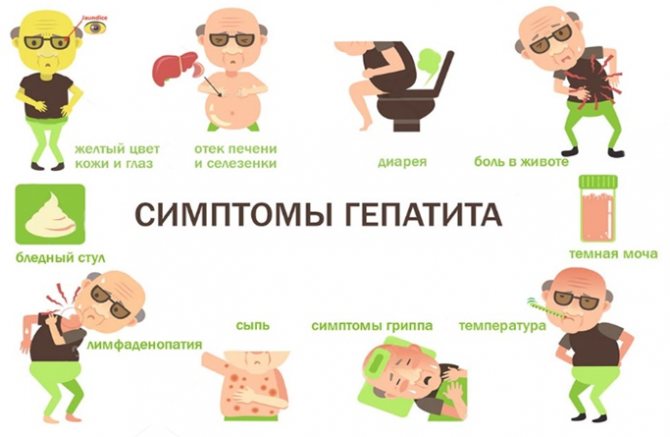
The well-established concept that hepatitis is manifested by jaundice is not always confirmed in practice. From the moment of infection with form A, it can take from one to several weeks for the first signs to appear. It could be:
- yellowing of the skin;
- general malaise;
- temperature increase;
- muscle aches.
Hepatitis B and C have a longer incubation period - up to 3-6 months. For the first six months, a man may not observe signs of the disease or experience minor discomfort.
With any type of hepatitis, during the first week, changes occur in the structure and color of stool, discomfort and heaviness appear in the right hypochondrium. Symptoms persist both at rest and after eating a heavy meal. There is an increase in bilirubin in the blood.
After the appearance of jaundice, the man’s condition worsens in proportion to the decline in the body’s immune system. If a person has not previously followed a healthy lifestyle, then the liver has little chance of resisting the virus.
Chronic hepatitis does not cause external symptoms, but provokes the development of cirrhosis or cancer.
Cirrhosis of the liver
The disease is typical for men in middle and old age. A common cause of cirrhosis is systematic alcohol consumption. Among other causes, 30-40% are hepatitis and hereditary factors (10-15%).
Liver damage has severe symptoms:
- yellowness of the skin;
- weakness;
- pain in the right hypochondrium;
- organ enlargement;
- changes in blood parameters.
Severe symptoms of liver cirrhosis are explained by the proliferation of connective tissue in the organ, which reduces the functionality of the organ. Toxic substances are not completely eliminated, which leads to intoxication of the body.
Liver cancer
The disease is different from cirrhosis of the liver. The main feature is the growth of cancer cells in the organ with the subsequent spread of metastases to the blood and other body systems. Cirrhosis often develops into cancer. There are other causes of cancer:
- hepatitis;
- alcoholism;
- excessive consumption of carcinogens.
Signs of liver cancer:
- weakness;
- decreased performance and immunity;
- nausea;
- vomit;
- earthy gray skin color;
- itching;
- disruption of the gastrointestinal tract;
- intestinal or stomach bleeding;
- intoxication of the body.
Liver cancer is a serious disease that does not require treatment in its later stages.
Cyst
The cause of the neoplasm can be factors: poor lifestyle, heredity. A man feels symptoms when the cyst grows to a large size. It causes pain and atrophic changes in the liver.
There are parasitic and non-parasitic cysts. The latter are characterized by the proliferation of tissue foreign to the organ. Because of this, pressure occurs on the liver and its functioning is disrupted.
Parasitic cysts develop due to the ingestion of parasites that develop in the liver and negatively affect the functioning of the organ. Hydatid echinococcosis is the most common form of the disease. It is characterized by the development of a tapeworm in the organ. Routes of transmission: contaminated products, contact with sick animals.
The danger of hydatid echinococcosis is the hidden course of the disease. The first symptoms appear after 2-3 years. During this time, the parasite causes irreparable harm to the body.
Symptoms of parasitic liver cysts:
- pain in the right hypochondrium;
- discomfort and a feeling of heaviness to the right of the abdominal cavity, extending into the chest;
- general malaise of the body;
- vomiting, diarrhea, loss of appetite.
Most of the signs of liver disease in men are identical, so when the first symptoms appear, even a professional doctor is not able to make a correct diagnosis. Only laboratory and instrumental diagnostic methods, together with the patient’s exact complaints, will help determine the specifics of the disease and prescribe appropriate treatment.
Source: mojkishechnik.ru
The nature of pain in diseases of the organ
Unpleasant sensations due to liver pathology can be different. As its size increases and the capsule overstretches, slight aching pain appears in the hypochondrium on the right side, as well as distension and unpleasant heaviness. They indicate the development of a sluggish pathological process in the body of toxic or other origin. Patients with such ailments cannot accurately indicate the pain point.
Diseases of the extrahepatic bile ducts and gallbladder are characterized by strong pinpoint pain in the area of this organ.
When there is a pronounced purulent, traumatic, inflammatory process or destruction of the bile ducts, intense discomfort appears. In this case, many people are interested in how the liver hurts? Symptoms in men with such problems are as follows: severe pain in the hypochondrium on the right side, vomiting and darkening of urine.
If pain does not occur in the hepatic gland, it means that we are most likely talking about indolent pathologies of the organ. Such diseases go undetected for a long time, they are detected only at the stage of cirrhosis or liver failure.
Symptoms
The main symptoms of liver disease include:
- pain in the right hypochondrium;
- indigestion;
- jaundice;
- skin itching;
- changes in the size and shape of the abdomen;
- fever.
Pain
The typical localization of pain in liver pathology is the right hypochondrium.
Chronic diseases are characterized by prolonged aching or dull pain, sometimes described by patients as a feeling of heaviness or fullness.
In acute processes, the pain is intense, occurs suddenly, often for no apparent reason, and is paroxysmal or increasing in nature.
Many liver diseases are characterized by irradiation of pain into the upper right sections of the chest, right shoulder, collarbone, under the right shoulder blade, and into the interscapular space. This distribution of pain is explained by the common innervation of the liver capsule and some parts of the chest.
Dyspepsia
Among dyspeptic complaints, patients note:
- bitterness in the mouth and bitter belching;
- nausea;
- decreased appetite;
- vomiting;
- rumbling and bloating;
- constipation or diarrhea.
These symptoms result from a disruption in the formation and secretion of bile, which is necessary for the digestion of fats. Another cause of dyspepsia is the accumulation of various toxins in the body due to a decrease in the neutralizing function of the liver.
Fever
A high temperature is usually a marker of active inflammation in the liver, gallbladder or ducts. Febrile fever is accompanied by diseases such as acute cholecystitis, cholangitis, hepatitis, active cirrhosis, and liver abscess. Low-grade fever is observed in chronic diseases, hepatic colic, and liver cancer.
Itchy skin
Severe painful skin itching usually accompanies jaundice, but sometimes appears long before it and serves as a harbinger of serious liver diseases. The cause of itching is bile acids, which, due to impaired bile excretion, accumulate in the blood and irritate the nerve endings of the skin. The itching is constant, persistent, does not stop day or night, disrupts sleep and significantly worsens the quality of life of patients. In some cases, scratches on the skin become infected.
Jaundice
Jaundice is of utmost diagnostic importance for liver diseases; its appearance is associated with an excess content of bile pigments in the blood. Pathology of the liver and biliary tract is characterized by 2 types of jaundice:
- parenchymal (liver);
- mechanical (subhepatic).
Parenchymal jaundice is caused by damage to liver cells. It usually develops gradually, over a long period of time, so that the patient himself does not notice its appearance. First of all, the sclera, soft palate, and underside of the tongue turn yellow, a little later - the palms and soles of the feet, and only then the whole skin turns yellow. The color of the skin with hepatic jaundice is saffron yellow or orange.
Obstructive jaundice is a consequence of blockage of the common bile duct by a stone or tumor. It appears suddenly and grows very quickly, the skin color ranges from greenish-yellow to dark olive. Subhepatic jaundice is accompanied by severe skin itching.
In some diseases, jaundice is always present, only its intensity changes.
Skin change
Other typical skin manifestations include pinpoint hemorrhagic rashes, multiple bruises, and cholesterol deposits in the form of yellow plaques on the hands, elbows, feet (xanthoma), and on the eyelids (xanthelasma).
With long-term liver diseases, a characteristic change in the palms is observed - palmar erythema. There is a symmetrical redness of the skin in the area of the eminence of the thumb and little finger; when pressed, the skin turns pale and then returns to its previous color. Palmar erythema does not manifest itself as subjective symptoms.
Along with changes in the palms, spider veins . They are localized exclusively on the upper half of the body, face, neck, and have the appearance of pulsating nodules rising above the skin level with thin capillaries diverging from it.
The tongue becomes smooth, shiny, bright red.
There is an enlargement of the mammary glands (gynecomastia), and hair growth on the abdomen, chest and face stops.
Abdominal enlargement
An increase in abdominal volume may be due to hepatomegaly, flatulence and ascites.
Almost all diffuse liver diseases are accompanied by an increase in its size. With portal hypertension, the spleen enlarges simultaneously with the liver.
In malnourished patients, there is a pronounced asymmetry of the abdomen with a noticeable bulging of the enlarged liver. The cause of flatulence is difficulty in digestion.
With portal hypertension, fluid accumulates in the abdominal cavity (ascites), its volume can reach several liters. With ascites, the abdomen looks saggy and the navel protrudes. In a horizontal position, the belly resembles that of a frog - it is spread out, bulging out at the sides.
Mental disorders
In many chronic liver diseases, severe asthenia is observed: weakness, apathy, and decreased ability to work.
How does the liver hurt: symptoms in men
Treatment for damage to this organ should not be delayed under any circumstances. Early symptoms of liver diseases developing in males include:
- Gaining extra pounds due to metabolic disorders.
- Changeable behavior - constant quarrels, unreasonable anger and increased irritability.
- Frequent colds associated with disruption of various organs. Bacteria quickly multiply and penetrate the blood, and the liver gland cannot remove toxins. As a result, immunity decreases, so a person begins to catch colds more often.
- Low pressure.
Other symptoms of a diseased liver
Disturbances in the functioning of this organ are often recognized by characteristic signs. Everyone should know how the liver hurts. Symptoms in men, how to treat and eliminate them correctly, will only be described and helped by a specialist after an examination. With this illness, heartburn, a strong smell of sweat, itching in some areas of the skin, constant thirst and hunger, vomiting, bitterness in the mouth, nausea, hair loss from the eyebrows and head may occur.
Moreover, with liver disease, slight yellowing of the sclera of the eyes and skin, acne, the appearance of spider veins, and dark urine are possible. In a serious condition, a person’s breath begins to smell like raw liver.
Signs of liver disease in men
Everyone suffers from liver disease, regardless of social status and gender, but most often it is men who suffer from it.
Liver diseases are very dangerous and can be fatal, but representatives of the stronger sex often miss those first warning signs of danger.
It seems to them that anyone but them can have liver problems, but, unfortunately, this is not the case. And therefore, everyone should know the main signs of liver disease.
Symptoms of liver disease in men
The liver is one of the most important organs in our body, but, nevertheless, the most “modest”.
The liver is often silent about its problems, until very serious problems appear with it, when the disease has long passed into the chronic stage.
This is all due to the absence of nerve endings that transmit a signal of pain to our brain - to some extent, a request for help from our body. Pain appears only when other organs begin to suffer.
But you can still identify the first symptoms of liver problems. Alarm bells come from other systems of the body, so they often go unattended or are not associated with the liver.
This:
- Increased fatigue;
- Digestive disorder;
- Insomnia or vice versa drowsiness;
- Frequent ARVI;
- Uncharacteristic skin color – pallor or yellowness;
- Obesity is a consequence of hormonal imbalances;
- Varicose veins
Gastrointestinal symptoms
The gastrointestinal tract is the first to react to the presence of any problems with the liver, which manifests itself in:
- Nausea and even vomiting when eating fatty fried meats and spicy foods. The liver does not have time to process all the toxins coming from food, and therefore the general intoxication of the body increases. This also applies to alcohol.
- Bloating, flatulence, diarrhea.
- The tongue is often coated, white or yellow. Sometimes it may even change color to purple.
- Bad breath. In the morning there is an unpleasant bitter taste in the mouth.
- Feeling of heaviness in the epigastric region.
- Lack of appetite.
- Change in liver size. This can be determined by palpation or by eye - due to a slight increase in the abdomen on the right side.
Signs on the skin
- Yellowing of the skin (but not in 100% of cases)
- Yellowish color of the whites of the eyes
- Itching of the skin. This is a consequence of increased bile production.
- Spider veins due to subcutaneous hemorrhages
- The appearance of increased pigmentation - age spots, moles, freckles.
- Redness near the thumb and little finger on the hands and feet
- Brown spots near the roots of the hair.
- Skin that feels cold and clammy to the touch
Changes in the genitourinary system
- Swelling.
- Darkening of urine.
- Sexual disorders. In men, due to hormonal imbalances, the production of estrogens (typically female hormones) increases and, as a result, libido decreases, gynecomastia (breast enlargement), testicular atrophy and even impotence are possible.
Blood clotting problems
The mechanism of the influence of liver malfunctions on blood clotting is very complex. This occurs through impaired absorption of vitamin K and a decrease in the synthesis of blood inhibitors. Manifests itself in minor bleeding - nasal, stomach, hemorrhoidal, as well as minor injuries (for example, when brushing teeth)
From the nervous system
- Sudden change in character – irritability, apathy
- Convulsions
- Change of consciousness
- Hand trembling
- The appearance of epileptic seizures
- Sleep disturbance.
General signs of body intoxication
- Increased body temperature.
- Chills.
- Nausea and vomiting.
- Muscle pain or muscle atrophy.
- Sharp weight loss.
Liver diseases in men
There are many liver diseases, but we will look at the most important of them (and the worst)
Types of cirrhosis
- Primary biliary cirrhosis is characterized by a sudden appearance, for no apparent reason. Formed as a result of genetic immune failures.
- Alcoholic cirrhosis occurs as a result of long-term toxic effects of alcohol.
- Viral hepatitis occurs as an autoimmune disease (the body rejects its own cells).
- Congestive cirrhosis - necrosis of liver tissue is caused by stagnant blood processes and cell hypoxia.
Complications
- Bleeding.
- Kidney failure.
- Hepatic coma.
- Thrombosis of the collar vein.
- Peritonitis, sepsis.
Liver steatosis
Replacement of healthy liver cells with fat cells
Causes:
- Obesity
- Diabetes
- Protein deficiency
- Problems with the gastrointestinal tract
- Alcohol
Symptoms: liver enlargement
Types – alcoholic and non-alcoholic (caused by obesity)
Consequences – rupture of liver tissue, bleeding, cirrhosis
Liver hemangiomas
A disease associated with abnormalities of the liver vessels.
Symptoms:
- Heaviness and distension in the epigastric region.
- Nausea, flatulence, heartburn, belching.
Liver cysts
Only worry about very large sizes.
Symptoms:
- Nausea.
- Bloating.
- Heartburn.
- Jaundice.
- Increased sweating.
- Pain in the subcostal area.
- Urticaria (with a parasitic form).
Kinds:
- Parasitic - a cyst caused by the penetration of a tapeworm parasite into the liver.
- Non-parasitic.
Characterized by a violation of copper metabolism in the body. Affects the liver and brain. Feature: children and adolescence.
Symptoms:
- Common gastrointestinal symptoms include indigestion and lack of appetite.
- Speech impairment.
- Tremor.
- Involuntary laughter or crying.
- Muscle hypertonicity.
Hemochrotomosis
Iron metabolism disorder
Characteristic symptoms:
- Bronze skin tone.
- Increased sugar levels in urine.
- Arrhythmia.
Complication – cirrhosis of the liver
Organ destruction due to hormonal imbalance
You need to be aware of liver pain. Symptoms in men depend on the type of disease, the presence of concomitant pathologies, as well as the individual characteristics of the body. Sometimes hormonal changes, which are especially noticeable in chronic alcoholics, lead to damage to this gland.
In men with similar changes, female hormones appear in the blood. Feminization occurs in most patients from excessive drinking. In other cases, hormonal changes appear due to viral cirrhosis.
Remember that every person should definitely know how the liver hurts. Symptoms in men, recognized in time, will help detect the disease and begin adequate treatment on time. After all, chronic pathologies of the liver gland in representatives of the stronger sex often lead to the development of diabetes.
Skin reaction to a diseased liver
The skin reacts to all pathological processes in the body, and ailments of this organ are no exception. With liver diseases, the skin turns yellow. A rash in the form of boils or pustules may also appear in men, since the gland ceases to normally produce immunoglobulins. In the event that papules and spots appear on the body, we are talking about detoxification of the organ. But when the rash is hemorrhagic, the synthetic function of the liver has most likely decreased.
When the shade of the skin changes, the amount of bilirubin in the blood increases. It is jaundice that most often indicates the development of hepatitis or cirrhosis of the liver.
Skin changes in liver diseases
Skin, hair, and nails react to liver problems like litmus paper, so it is important to conduct a self-examination and pay attention to any visual abnormalities in your body. They may be:
- The appearance of white spots on the nail plates of the fingers and toes that do not have clear boundaries. This sign usually signals the transition of hepatitis to the chronic stage, as well as the development of liver cirrhosis.
- Yellowish skin tone. It is often present not only on the outer skin, but also on the mucous membranes (including the whites of the eyes) and sclera. It appears better in natural light, but indoors the color signature may become blurred.
- The appearance of stretch marks (striae), most often in the abdominal area. They look like thin, loose stripes of a bluish tint. They indicate a hormonal imbalance when the liver loses its ability to neutralize excess steroid hormones.
- Skin rash. Can be expressed in different forms. The appearance of pustular lesions and boils is a consequence of immune imbalance due to liver dysfunction and its inability to synthesize immunoglobulins. Allergic rashes (dermatitis, eczema, psoriasis) are caused by loss or impairment of the detoxification function of the liver. A hemorrhagic rash indicates a decrease in the synthetic function of the liver, which affects blood clotting. As a result, a person becomes vulnerable to the formation of bruises and hematomas even with the slightest injury.
- Spider veins. They form not only on thin areas of the skin (face, neck), but also throughout the body: back, limbs, abdomen. They are considered a classic manifestation of liver cirrhosis that has entered the active phase.
- Itching. It is a stable “companion” of skin rashes and jaundice. This is explained by the fact that unprocessed toxic substances are concentrated in the upper layers of the epidermis and, accordingly, cause irritation. Unneutralized bilirubin is also deposited in the skin, which is why patients with various liver pathologies often have scratch marks on the forearms, abdomen, and thighs.
- Brown coloration of the groin area and armpits. It is a sign of the development of hemochromatosis and cirrhosis of the liver.
Secondary skin signs that signal a malfunction of the liver may include cracks (seizes) in the corners of the mouth, too bright a color of the tongue, and swollen veins on the abdominal surface.
Gland problems due to alcohol
With long-term consumption of alcohol-containing drinks, a person develops various ailments. As a rule, symptoms of a diseased liver begin to appear only after 10 years. Usually in such cases, doctors discover alcoholic hepatitis, cirrhosis and fatty degeneration in drinkers.
The development of such diseases is diagnosed in most cases in the stronger sex than in women, since men drink alcohol more often. But in women, such pathologies develop faster, even if they drink much less alcoholic beverages. This is due to the gender specificity of alcohol removal from a woman’s body.
Liver diseases occur almost imperceptibly with such addiction, so it is important to undergo examinations on time and know how the liver hurts. Symptoms in men after drinking alcohol are as follows:
- Heartburn and constant nausea.
- Yellowness of the skin.
- Mental disorder.
- Weakness.
- The appearance of severe discomfort in the hypochondrium.
- Loss of appetite.
Diagnostic measures
When your liver begins to hurt, you need to consult a doctor to determine the exact cause of these unpleasant sensations. The doctor will make a diagnosis based on an examination of the patient, instrumental diagnostics and blood test results. If a diseased liver is suspected, the patient will have to undergo non-invasive examinations - MRI, ultrasound and CT.
In addition, laparoscopy, immunological tests, biopsy, blood tests, genetic studies, and puncture of focal lesions are prescribed. It is on the basis of the examination results that the specialist selects the appropriate therapy.
How to treat the disease
How the liver hurts, symptoms in men and treatment of any pathologies of this organ depends on the degree of its damage, the diagnosis and the presence of other diseases. When toxic hepatitis is detected in a patient, various procedures are carried out to remove harmful substances from the body. They also resort to techniques that help eliminate the symptoms of intoxication. The patient will still have to change his diet.
People who know how the liver hurts have a greater chance of recovery. Symptoms in men are quickly relieved by medication. Complex therapy of liver pathologies involves taking antibacterial, antiviral and other medications. In advanced cases, surgical intervention is often resorted to. During the operation, doctors excise the affected areas of the liver.
Representatives of the stronger sex should definitely be aware of liver pain. Symptoms in men, reviews and causes will help detect the disease at an early stage. To avoid problems with the gland, it is recommended:
- Avoid smoked, spicy and highly salted foods. They should be replaced with porridge, lean meat and vegetables.
- Stop drinking alcoholic beverages.
- Get rid of bad habits.
- Constantly undergo medical examinations.
- Do not neglect personal hygiene.
If symptoms of liver damage occur, you should immediately see a doctor. Remember that timely treatment will help prevent negative life-threatening consequences.
How to deal with liver diseases?
Therapy for the liver will depend on the stage of organ damage and the development of additional symptoms. In case of acute toxic hepatitis, the patient must be urgently hospitalized in the intensive care unit. The following treatment is provided there:
- gastric lavage, as well as other cleansing procedures;
- detoxification to cleanse the blood of poisons, helping to reduce the functional load on the organ;
- taking antibacterial, anti-inflammatory, antiviral medications, as well as drugs to normalize the functioning of hepatocytes;
- symptomatic treatment;
- in advanced situations, surgical intervention to remove damaged parts of the organ.
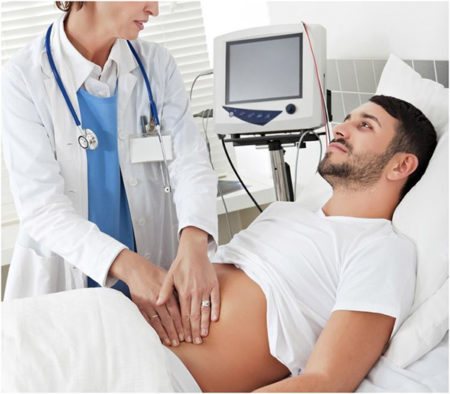
To prevent inflammation, you should adhere to the following rules:
- give up alcohol;
- give up junk food – fatty, fried, etc.;
- take any medications only as directed by a doctor and strictly in accordance with the selected dosages;
- observe the rules of personal hygiene, since hepatitis is often a consequence of contaminated food, water, and can also be provoked by helminths and trichomonas;
- Visit your doctor regularly for preventive examinations.
Acquired liver pathologies are more often diagnosed in men due to frequent abuse of alcohol, especially beer, an unbalanced diet, and inattention to one’s own health. Men often endure pain without visiting doctors, which causes the disease to progress. Usually, a doctor is consulted when the organ is greatly enlarged, when nearby structures are involved in the pathological process, and the pain becomes unbearable.
Helpful information. Attentive and careful attitude towards your body allows you to make a correct diagnosis in a timely manner and prevent complications. In this regard, doctors advise regularly donating blood for biochemistry.

Treatment of liver diseases

